As an avid hiker, physical therapist, and self-proclaimed worry wort mom, I often find myself pondering the question: is hiking dangerous?
I mean, sure, I love to hit the trails and explore the great outdoors, but I can’t help but worry about all the potential hazards out there. I’ve included a science-based answer to the age old question, to hike or not to hike?
Quick Verdict: Is Hiking Safe?
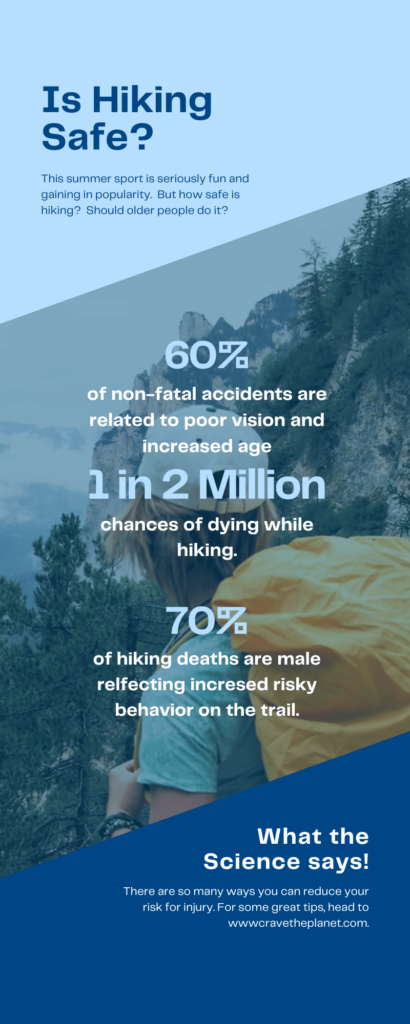
As it turns out, you’re about twice as likely to be hit by lightning than die hiking.
To more fully learn about the dangers of hiking, I decided to do some research. I consulted with the US National Park Service, research conducted in the Alps (my favorite hiking area), scoured through some old military journals, and read countless hiking books to find out what the top hazards are.
Top 3 Risks for Mortality When Hiking: Motor Vehicle Collision, Accidental Drowning and Falls
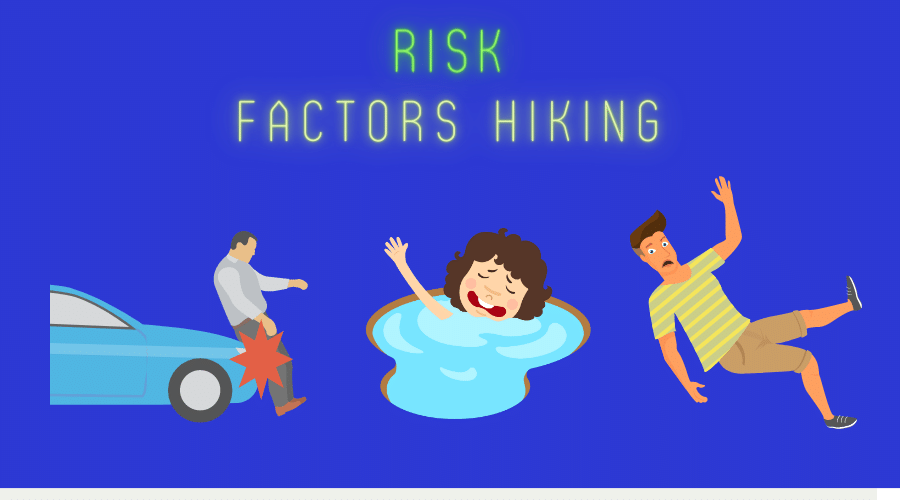
So, let’s take a closer look at the risks and rewards and rules of hiking, and try to answer the age-old question: to hike or not to hike?
This made me think…
In most cases I’m going to vote yes. The benefit of hiking FAR outweighs the risk.
What You Will Learn
- Become a European Adventure Travel Insider in Just 5 minutes
- Is Hiking Dangerous? Our experience in the Dolomites in Italy
- Hiking Statistics
- Top 15 Hiking Hazards
- Weather-related risks
- Terrain-related risks
- Navigation-related risks
- Human-related risks
- Adaptation-related risks
- How Common Are Hiking Deaths?
- Conclusion: Is Hiking Dangerous?
- FAQ Hiking Safety
Become a European Adventure Travel Insider in Just 5 minutes
✨Unlock Europe’s best-kept secrets with our free bi-weekly newsletter.

Is Hiking Dangerous? Our experience in the Dolomites in Italy
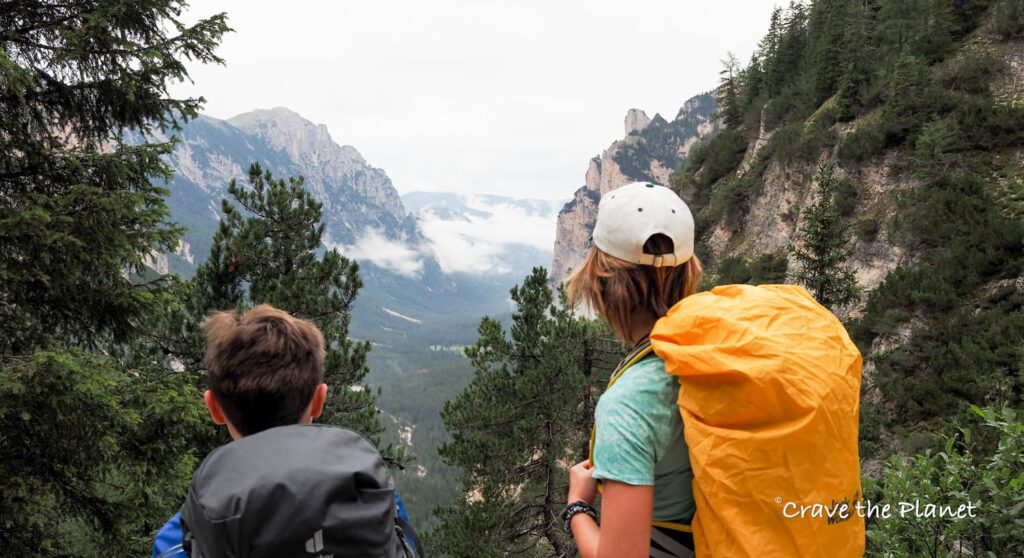
Our hike on the Alta Via 1 in Italy last summer was an exhilarating experience, with stunning views of steep cliffs and breathtaking landscapes at every turn.
Although the trail presented some challenges, we were able to navigate them safely and enjoy the journey.
Our Experience hiking in Romania
It was very safe for us here but we had to watch out for wild dogs and bears. We walked along the Via Transilvanica pilgrim path (with 1400 trail markers hand carved in stone) and did not encounter any problems.
Is trekking dangerous?
The kids were never thinking “is this dangerous”? They were so present, engaged, and relaxed to be on a 5 day “vacation” without cell phones or social media.
Yes. It’s true that hiking can be dangerous if you are not prepared or aware of the risks. However it is far less dangerous to be out hiking that just living a normal life.
Hiking Statistics
According to the NPS the mortality rate per 100,000 people in a National park (likely to be engaged in hiking but not necessarily) is 0.1 in a park vs 848 in the United States. Only about half the deaths were unintentional and the rest were mainly medical conditions and suicide.
In fact:
🌈 Hiking is not only a fun and adventurous activity, but it also provides numerous benefits for both the mind and body. And walking has a long history of serving as a catapult for women’s rights. Read Windswept Why Women Walk to gain perspective.
It can help improve cardiovascular health, reduce stress and anxiety, boost mood, and increase overall fitness levels.
In addition to physical and mental benefits, the best hiking adventures can also help us connect to nature, unplug from modern stresses, and spend quality time with ourselves and our loved ones.
So let’s jump right into the top 15 risks associated with hiking and then I’ll provide tips on how to stay safe hiking.
Top 15 Hiking Hazards
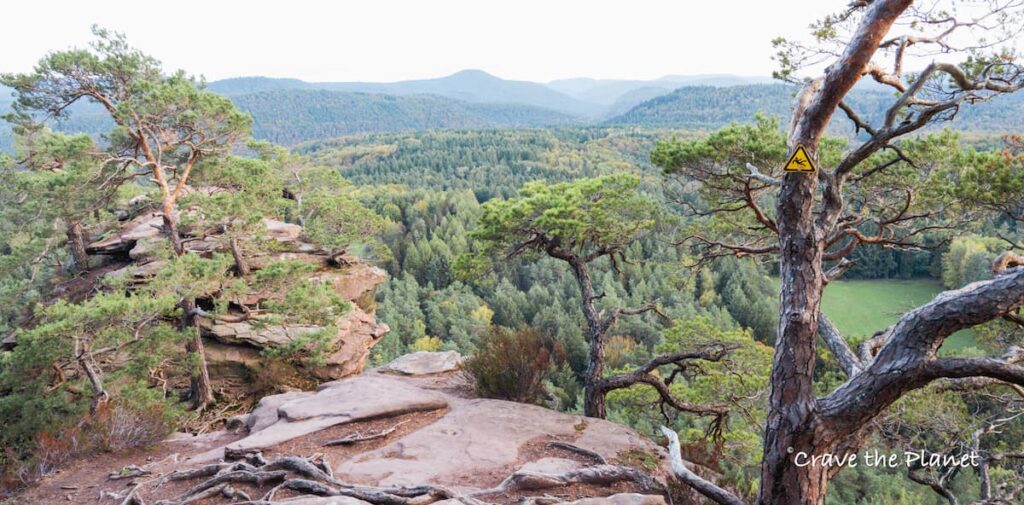
- Getting lost: It is easy to get lost while hiking, especially if you are unfamiliar with the area. Always carry a map or navigation app like Komoot, compass, and GPS device, and make sure to stay on marked trails.
- Motor Vehicle Accidents or Other Transit (bicycle, boat, etc): Depending on where you are hiking, you may encounter roads where cars are not paying attention to hikers. Be aware of the traffic in the area and take precautions.
- Hypothermia: Hypothermia occurs when your body loses heat faster than it can produce it, and it can be life-threatening. Always dress in layers and bring extra clothing in case of unexpected weather changes.
- Dehydration: Hiking can be physically demanding, and it is important to stay hydrated. Bring plenty of water and drink regularly, even if you do not feel thirsty.
- Falls: Falls are one of the most common hiking accidents and can result in serious injuries. Always be aware of your surroundings, watch your step, and use hiking poles if necessary.
- Bad weather: Weather can change quickly while hiking, and it is important to be prepared for all conditions. Check the weather forecast before you go and bring appropriate clothing and gear.
- Being underprepared: Always research the area you are hiking in and bring the necessary gear and supplies. This includes food, water, first aid kit, blister kit, and emergency shelter.
- Underestimating the trail: Hiking trails can be longer and more difficult than they appear. Always research the trail and make sure you are physically and mentally prepared for the hike. Use my hiking time calculator to estimate your time.
- Poisonous plants or animals: Some plants and animals can be poisonous and can cause serious harm. Learn about the plants and animals in the area before you go and take precautions to avoid them.
- Sun exposure: Hiking in the sun can lead to sunburn, heat exhaustion, and dehydration. Always wear sunscreen, a hat, and sunglasses, and take breaks in the shade when necessary.
- Injury: Hiking can be physically demanding, and injuries can occur. Always be aware of your surroundings and take precautions to avoid acute injury. Protect your toes walking downhill with adequate boots or trail hiking shoes.
- Getting caught in the dark: It is easy to lose track of time while hiking and get caught in the dark. Always bring a headlamp or flashlight and extra batteries.
- Altitude sickness: Altitude sickness can occur when hiking at high elevations. Symptoms include headache, nausea, and dizziness. Always acclimate to the altitude before hiking and take breaks when necessary.
- Faulty or inadequate hiking gear: Always make sure your gear is in good condition and appropriate for the hike. This includes hiking boots, backpack, and other equipment.
- Flash Floods: Flash floods can be a serious danger for hikers, particularly in areas with steep terrain or narrow canyons. Even a small amount of rainfall can quickly turn into a life-threatening situation, so it’s important to be aware of the risk and take appropriate precautions. Even the famous Cinque Terre Lovers Walk (Via Dell’Amore) was closed due to landslide for over a decade.
Dangers of Hiking Summary
| Weather Related | Frostbite Heat exhaustion Dehydration Lightning strikes Flash flood |
| Terrain Related | Fall Injury Rockslide Avalanche Wildlife encounters |
| Navigation Related | Getting lost or disoriented Inadequate gear and supplies Inexperience |
| Human Related | Crime Violence Medical Emergency Group Conflict Motor Vehicle Accident |
| Adaptation Related | Blisters Body Pain Muscle and Joint Stiffness Poisonous Plants |
Now let’s deep dive into the hiking hazards one by one.
🔥 ➡️ Related Reading – Hiking Advice from a Physical Therapist Hiking Addict:
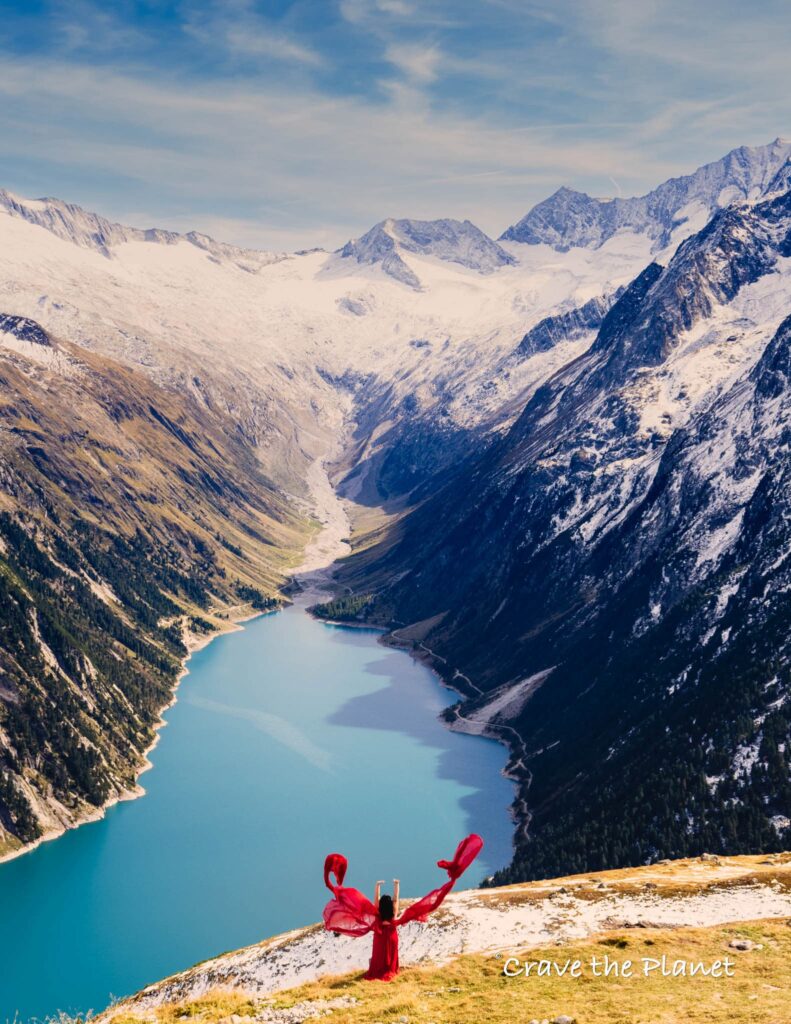
When it comes to hiking, weather can be unpredictable and can quickly turn dangerous. It’s important to be prepared for any type of weather and to know the risks associated with each.
Heat exhaustion and dehydration
Hiking in hot weather can lead to heat exhaustion and dehydration. Symptoms of heat exhaustion include heavy sweating, weakness, dizziness, nausea, and headache.
To prevent heat exhaustion and dehydration, it’s important to drink plenty of water and take breaks in the shade. Wearing light-colored, loose-fitting clothing can also help.
Hypothermia and frostbite
Hiking in cold weather can lead to hypothermia and frostbite. Hypothermia occurs when the body loses heat faster than it can produce it, leading to a dangerously low body temperature.
Symptoms of hypothermia include shivering, confusion, and loss of coordination. Frostbite occurs when the skin and underlying tissues freeze, leading to damage and sometimes amputation.
To prevent hypothermia and frostbite, it’s important to wear warm, layered clothing and to stay dry.
Lightning strikes
Hiking in thunderstorms can be dangerous due to the risk of lightning strikes. If you hear thunder, it’s important to seek shelter immediately. Avoid standing near tall trees or other tall objects and avoid open areas.
If you can’t find shelter, crouch down low with your feet together and your head tucked in.
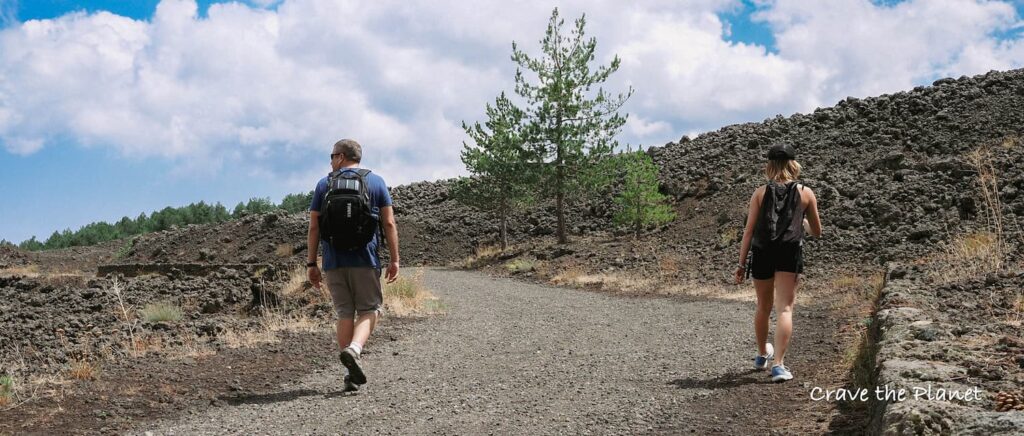
When we hike, we are often faced with various terrains, each with its own set of challenges. Here are some of the terrain-related risks we should be aware of:
Falls and injuries from uneven terrain
Uneven terrain is one of the most common hazards when hiking. It can cause hikers to trip, slip and fall, leading to serious injuries like broken bones, sprains, and cuts. To avoid this risk, we should always watch our step, wear appropriate footwear, and use trekking poles if necessary.
Rockslides and avalanches
In mountainous areas, rockslides and avalanches can be a major threat to hikers. These can be caused by heavy rain, snow, or even earthquakes.
To minimize the risk of being caught in a rockslide or avalanche, we should always check the weather forecast before hiking and avoid hiking in areas that are prone to these hazards.
Wildlife encounters
Encounters with wildlife can be another risk when hiking, especially in areas where bears, cougars, or other large predators live. To avoid this risk, we should always carry bear spray, make noise while hiking, and keep our distance from wildlife.
In conclusion, hiking can be dangerous if we are not prepared or don’t take the proper safety precautions.
By being aware of the risks and taking the necessary steps to mitigate them, we can ensure a safe and enjoyable hiking experience.
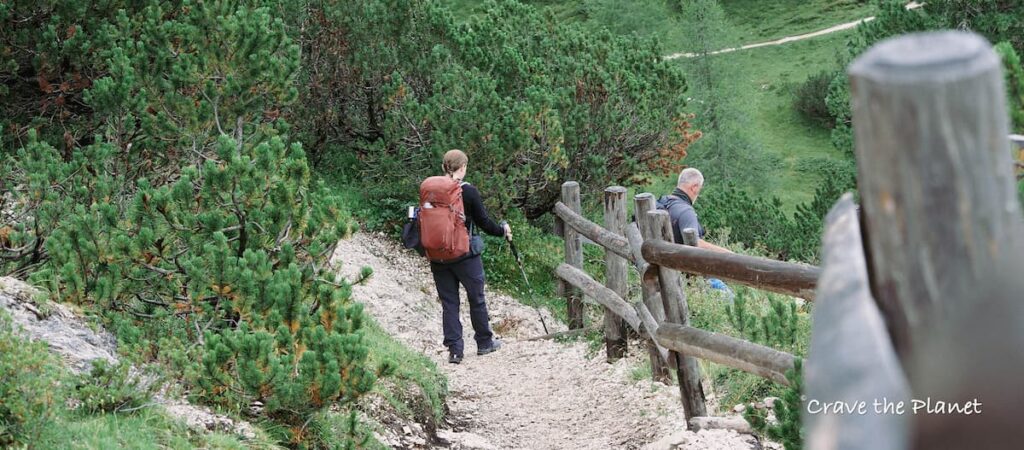
When we go hiking, one of the most significant risks we face is getting lost or disoriented. This can happen for many reasons, including poor trail markers, unexpected changes in the terrain, or simply not paying attention to our surroundings.
To mitigate this risk, we need to take a few precautions.
Getting lost or disoriented
To avoid getting lost or disoriented, we need to make sure we have a map and compass with us at all times. We should also study the trail before we start and pay close attention to any landmarks or signs along the way. If we do get lost, we should stay put and try to signal for help.
Inadequate gear or supplies
Another navigation-related risk is being underprepared. This can happen if we don’t bring enough food, water, or warm clothing.
To avoid this risk, we should always bring more supplies than we think we’ll need and make sure we have the right gear for the conditions like gaiters or microspikes for hiking.
Inexperience or lack of preparation
Finally, we may face navigation-related risks if we lack experience or preparation. For example, we may not know how to read a map or use a compass, or we may not be familiar with the terrain.
To mitigate this risk, we should take a course on navigation or go hiking with someone who has more experience.
This is the reason I love dogs so much. Far safer than humans.
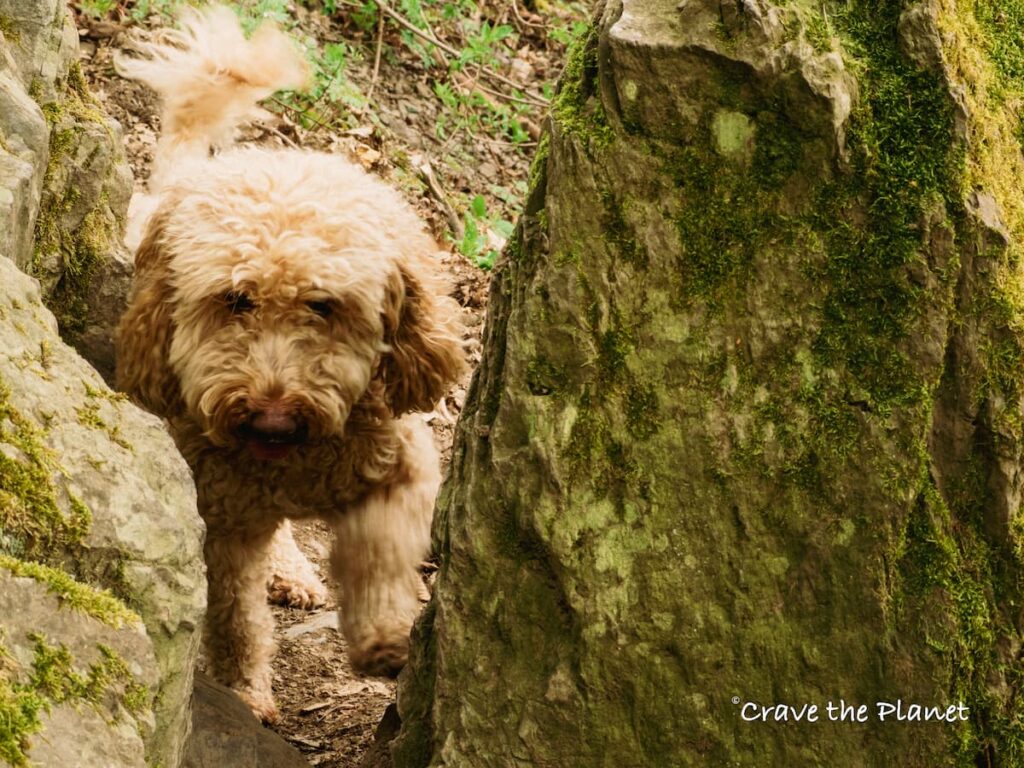
Humans are also a concern when it comes to hiking. Here are some sub-sections to consider:
Crime and violence
Unfortunately, crime and violence can occur while hiking. It’s important to be aware of your surroundings and take precautions to protect yourself. Here are some tips:
- Hike with a group or at least one other person
- Stick to well-traveled trails
- Avoid hiking alone at night
- Carry a whistle or personal alarm
- Be aware of any potential dangers in the area you are hiking
Medical emergencies
Medical emergencies can happen while hiking. It’s important to be prepared and know what to do in case of an emergency. Here are some tips:
- Carry a first aid kit with you
- Know basic first aid skills
- Bring any necessary medications with you
- Know the location of the nearest medical facility
- Bring a charged cell phone or other communication device with you
Group dynamics and conflicts
Hiking with a group can be a great experience, but it can also lead to conflicts. Here are some tips to help avoid conflicts:
- Communicate clearly and respectfully with other hikers
- Be aware of different hiking abilities and adjust accordingly
- Discuss any potential conflicts before the hike begins
- Take breaks and rest when needed
- Be open to compromise and finding solutions that work for everyone
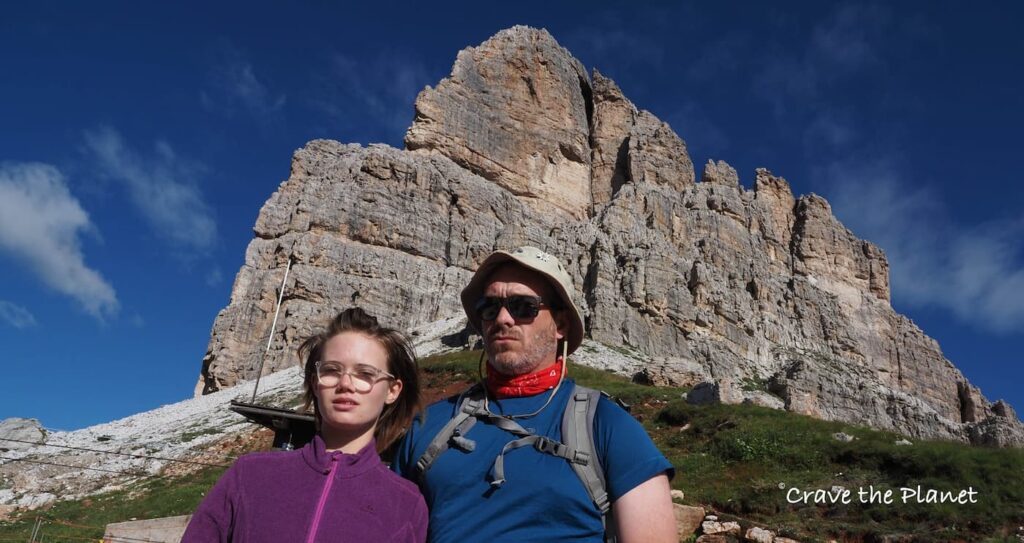
When it comes to hiking, adaptation is key to reducing risks. Here are a few adaptation-related risks to keep in mind:
Blisters
Blisters are a common hiking injury and can be caused by ill-fitting footwear or excessive moisture. To prevent blisters, make sure your shoes fit properly and are broken in before your hike. Wear moisture-wicking socks and carry moleskin or blister pads in your first aid kit.
Muscle and Joint Soreness
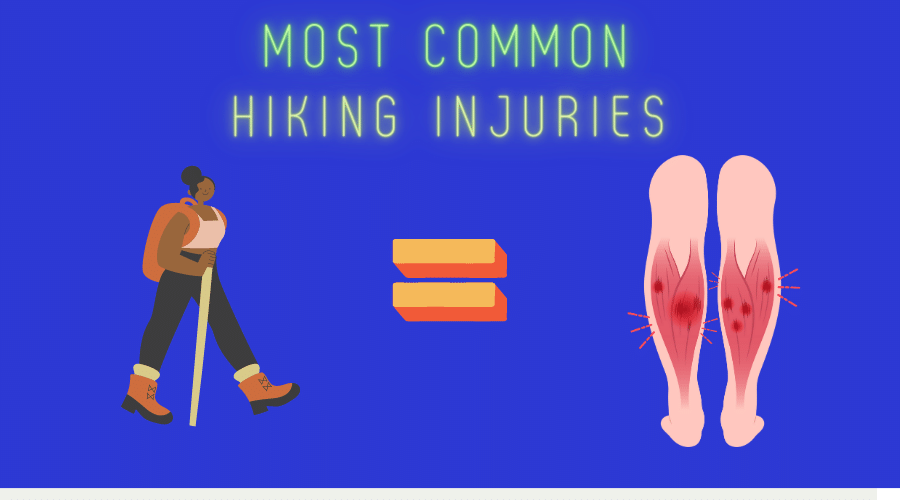
Hiking can be tough on your muscles and joints, especially if you’re not used to the physical activity. To reduce the risk of muscle and joint soreness like sore calves after hiking, make sure to stretch before and after your hike. Start with shorter hikes and gradually increase your distance and elevation. Learn how to use trekking poles to reduce the strain on your body.
Hazardous Plants
Some plants can be hazardous to hikers, causing skin irritation or even poisoning. Learn to identify plants like poison ivy, poison oak, and stinging nettle, and avoid touching them. Wear long pants and sleeves to protect your skin.
By being aware of these risks and taking the necessary precautions, we can enjoy the great outdoors safely and responsibly.
🥾😓 Feeling Overwhelmed Planning a Hike? Use my custom-built online Hiking Time Calculator for Non-techie People.
How Common Are Hiking Deaths?
According to the National Park Service, hiking is a relatively safe activity, with a mortality rate of only 0.1 deaths per 100,000 visits, which is significantly lower than the overall US population’s mortality rate of 844 deaths per 100,000 people. About 50% of these deaths are unintentional, resulting from factors such as slips and falls, exposure to extreme weather, and animal attacks.
Is Hiking Dangerous? Not When Compared With Driving
Interestingly, the risk of dying from everyday activities such as car rides is higher, with a mortality rate of 11.7 deaths per 100,000 people in 2020, compared to the 0.1 deaths per 100,000 people in National Parks.
Is night hiking dangerous?
Probably. This is not my area of expertise, but if you’re asking the question it probably means you shouldn’t do it.
Conclusion: Is Hiking Dangerous?
Hiking is a great way to stay active and explore the outdoors, but it’s important to be aware of the risks involved. By taking the necessary precautions, we can minimize the likelihood of accidents and injuries. It’s important to research the trail and weather conditions before embarking on a hike, and to bring appropriate gear and supplies.
We should also be aware of our physical limitations and not push ourselves too hard. By staying hydrated, nourished, and alert, we can enjoy the beauty of nature while staying safe. Remember to always respect the environment and wildlife, and to leave no trace.
Although the answer to the question “Is hiking dangerous?” depends on various factors, it’s worth taking the risk for a more well-rounded lifestyle in the end.
Happy trails!
FAQ Hiking Safety
What are the risks of hiking?
Not taking the proper safety precautions or being unprepared can make hiking a dangerous activity. Slips and falls are among the most common hazards of hiking, especially on wet, icy, or uneven terrain, which can result in severe injuries such as broken bones or concussions.
When should you not go hiking?
Experienced hikers usually avoid the peak hours of sun and heat by starting their trek in the early morning or late afternoon. It’s also important to pay attention to the weather forecast and avoid hiking in areas without shade on days with high temperatures and clear skies.

Author profile: Morgan Fielder is a Doctor of Physical Therapy and passionate hiker who believes in exploring the world on foot with good food. Follow her journey as she shares science-based hiking tips and advocates for sustainable tourism.
MORE HIKING RESOURCES
Get more physical therapist expert hiking tips here 👎🏻
- 🏋️♀️ Ready to take your hiking training to the next level? Learn how to use a weighted vest to boost your endurance and stamina on the trail – read on now!
- Discover the ultimate cheap sleeping solution for your SUV with the Exped Megamat Duo – read my review now!
- 👣 Ready to explore the most breathtaking hut-to-hut hikes in Europe? Check out our top picks now!
- 🌲 Get ready for your next hiking adventure with our comprehensive directory of resources designed to make your hike as comfortable as possible!
